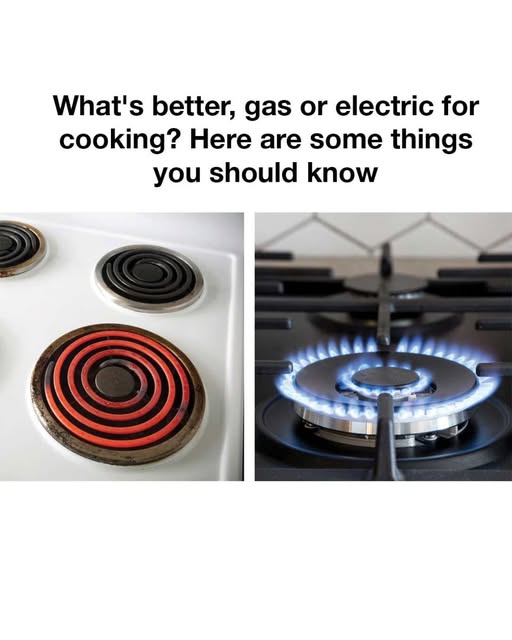ADVERTISEMENT
Certainly! Here’s a detailed article to guide people on Choosing Between Gas and Electric Stoves:
🔥 Choosing Between Gas and Electric Stoves: A Comprehensive Guide
Making the right decision for your kitchen, cooking style, and energy needs.
When it comes to outfitting your kitchen, one of the most important decisions you’ll make is choosing between a gas stove and an electric stove. Both types offer unique advantages and drawbacks, and your choice will impact everything from the way you cook to your energy bill. So, how do you decide which one is the right fit for your home?
In this comprehensive guide, we’ll walk you through the key differences, pros, and cons of gas and electric stoves, so you can make an informed choice that fits your needs.
🔥 Gas Stoves: The Traditional Favorite
Gas stoves are beloved for their immediacy and precision. If you like cooking over an open flame and enjoy quick adjustments to temperature, a gas stove might be the right choice for you.
Pros of Gas Stoves:
- Instant Heat Control: Gas burners offer immediate temperature changes. If you need to turn the heat up or down quickly, you can do it without a delay.
- Better for Some Cooking Techniques: For techniques like charring, searing, or wok cooking, gas stoves offer better control over the flame and heat distribution.
- Visual Heat Indicator: The visible flame on a gas burner lets you see the heat level instantly, which is particularly helpful for precise cooking.
- Works During Power Outages: As long as your gas supply is uninterrupted, gas stoves work even during power outages, making them a reliable option in emergencies.
Cons of Gas Stoves:
- Installation and Ventilation: Gas stoves require proper venting to prevent the buildup of gases like carbon monoxide. Installation can be more complex, particularly if you don’t already have a gas line.
- Cleaning: Gas stoves often have grates and burners that can be challenging to clean, especially when food spills onto the burners or grease collects over time.
- Energy Costs: In many areas, natural gas is less expensive than electricity. However, gas costs can fluctuate, and in some locations, they may end up being more expensive than electricity in the long run.
⚡ Electric Stoves: The Modern Choice
Electric stoves are often the go-to for easy-to-maintain cooking. They come in two varieties: coil burners and smooth-top models (often made with glass or ceramic). While they might not offer the same instant response as gas, they are still a popular choice for many kitchens.
Pros of Electric Stoves:
- Even Heat Distribution: Electric stoves, particularly those with smooth-top burners, offer more even heat distribution across the cookware. This is ideal for delicate cooking, such as simmering sauces or slow-cooking stews.
- Easier to Clean: Electric stoves, especially smooth-top models, are often much easier to clean. Without grates or burner rings, all you need is a simple wipe down.
- More Affordable: Electric stoves are typically less expensive than gas stoves, and they don’t require venting, so installation costs are generally lower.
- Energy Efficient: Modern induction cooktops (a form of electric stove) are highly energy-efficient, directly heating the cookware without wasting energy in the form of heat loss.
Cons of Electric Stoves:
- Slower Heat Response: Electric stoves can take longer to heat up and cool down compared to gas. If you need to change the temperature quickly, it may not be as responsive.
- Temperature Inconsistency: While electric stoves offer more even heat distribution, temperature control can still be less precise than gas. Once the burner heats up, you can’t see the heat level as clearly as with a flame.
